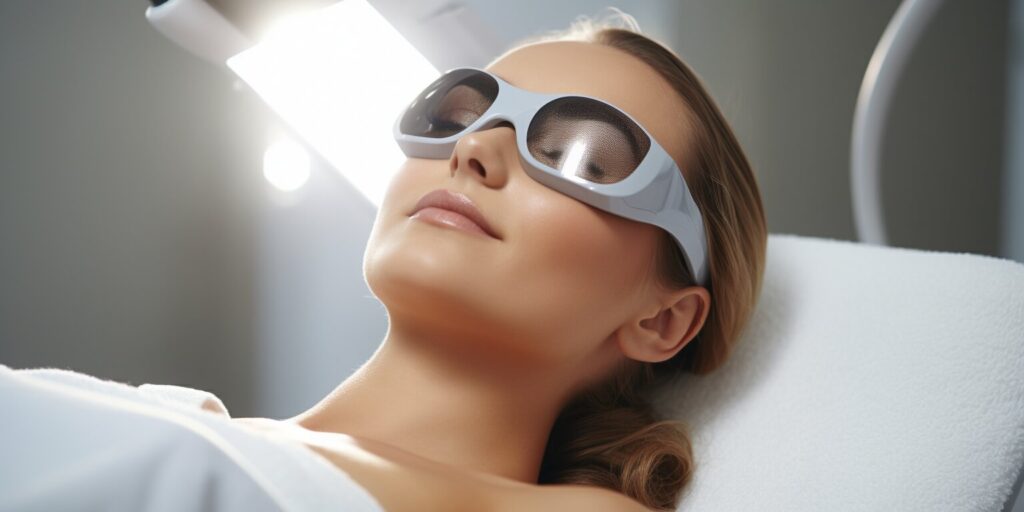In recent years, the field of medical aesthetics has witnessed remarkable advancements in laser technology. What was once considered science fiction has now become a reality, as lasers have evolved to offer a wide range of treatments, from hair removal to skin rejuvenation. This article will explore the fascinating journey of laser treatments, their diverse applications, and how they have revolutionized the beauty and skincare industry.
The Birth of Laser Technology
Laser, an acronym for “Light Amplification by Stimulated Emission of Radiation,” was first theorized by Albert Einstein in 1917. However, it took several decades for this concept to be transformed into practical applications. The development of the first working laser by Theodore Maiman in 1960 marked a significant milestone in the history of laser technology. This breakthrough paved the way for various applications, including medical treatments.
The Early Days: Laser Hair Removal
One of the earliest and most well-known uses of lasers in the beauty industry was for hair removal. The idea of using lasers to permanently reduce unwanted hair growth was groundbreaking. Early laser hair removal devices, such as ruby and alexandrite lasers, were introduced in the 1990s. These lasers target the melanin (pigment) in hair follicles, delivering controlled energy to destroy the follicles and inhibit hair regrowth.
While these early laser systems were effective in reducing hair growth, they had limitations, particularly in treating individuals with darker skin tones. The lasers’ preference for melanin made them less suitable for people with high levels of melanin in their skin, as the laser could inadvertently damage the surrounding skin.
Advancements in Laser Hair Removal
Over the years, technological advancements have led to the development of more sophisticated laser hair removal systems. One of the most significant breakthroughs was the introduction of diode lasers and Nd:YAG lasers. These lasers had longer wavelengths, making them safer and more effective for individuals with darker skin tones.
Furthermore, the emergence of advanced cooling systems, such as cryogen spray or sapphire tips, helped minimize discomfort and protect the skin during treatment. The combination of improved lasers and cooling techniques made laser hair removal a more inclusive and efficient procedure.
Beyond Hair Removal: Skin Rejuvenation
While laser hair removal remains a popular treatment, laser technology has expanded its horizons to include various skin rejuvenation procedures. These treatments address a wide range of skin concerns, from wrinkles and fine lines to pigmentation issues and acne scars. Let’s explore some of the key laser-based skin rejuvenation techniques.
1. Laser Skin Resurfacing
Laser skin resurfacing, also known as laser peel, uses high-energy laser beams to remove the top layer of damaged skin. This process stimulates collagen production and results in smoother, more youthful-looking skin. Fractional laser technology, such as the CO2 and erbium lasers, delivers precise treatment with shorter downtime compared to traditional ablative lasers.
2. Intense Pulsed Light (IPL) Therapy
IPL therapy is a non-invasive laser treatment that targets pigmentation irregularities, such as sunspots and redness while improving overall skin texture. It works by emitting intense pulses of light that penetrate the skin’s surface, breaking down pigment and stimulating collagen production.
3. Laser Tattoo Removal
Laser technology has also made tattoo removal more effective and less painful. Q-switched lasers, such as the Nd:YAG and alexandrite lasers, specifically target the ink particles in tattoos, breaking them down into smaller fragments that the body can naturally eliminate.
4. Fractional Laser for Acne Scars
Fractional lasers are commonly used to treat acne scars. These lasers create tiny micro-injuries in the skin, triggering the body’s natural healing response and promoting collagen remodeling. This process helps improve the appearance of acne scars over a series of treatments.
5. Laser Skin Tightening
Laser skin tightening procedures use laser energy to heat the deeper layers of the skin, stimulating collagen production and improving skin elasticity. This results in a firmer, more youthful appearance without the need for surgery.
Safety and Skin Types
Ensuring the safety and effectiveness of laser treatments is paramount in the world of medical aesthetics. Over the years, significant progress has been made in this regard, with a particular focus on accommodating different skin types and minimizing potential risks.
Understanding Skin Types: One of the most crucial aspects of laser safety is understanding the diversity of skin types. Fitzpatrick’s skin type classification, which ranges from Type I (fair skin, always burns, never tans) to Type VI (dark skin, never burns), is commonly used to assess a patient’s skin tone. Laser practitioners take into account the patient’s skin type to select the most suitable laser system and adjust treatment parameters accordingly.
Tailored Treatment Plans: Modern laser technology allows for customized treatment plans based on an individual’s skin type. For individuals with fair skin, lasers with shorter wavelengths, like the Alexandrite or Ruby lasers, are often preferred, while those with darker skin benefit from longer-wavelength lasers like the Nd:YAG. This tailored approach minimizes the risk of adverse effects such as burns or pigmentation changes.
Safety Measures: Advanced cooling systems, precise targeting, and controlled energy delivery mechanisms further enhance safety during laser procedures. These features help protect the skin’s surface and surrounding tissues while ensuring that the laser energy reaches its intended target in the deeper layers of the skin.
By prioritizing safety and taking into account the nuances of different skin types, laser practitioners can offer effective treatments with reduced risks, making laser procedures accessible and beneficial to a wider range of patients.
The Patient Experience: What to Expect During Laser Treatments
Entering a laser treatment session can be a mix of excitement and anticipation. Understanding what to expect during the procedure can help alleviate any anxiety and ensure a smooth experience.
Consultation: Your journey begins with a consultation with a trained professional. They will assess your skin type, discuss your goals, and determine the most suitable laser treatment for you. It’s essential to be open about your medical history and any medications you are taking.
Preparation: Depending on the type of treatment, you may be advised to shave the treatment area or avoid sun exposure in the days leading up to the procedure. Ensure you follow any pre-treatment instructions provided by your practitioner.
During the Treatment: During the actual procedure, you will be given protective eyewear to shield your eyes from the laser light. The sensation varies depending on the treatment but is often described as a mild discomfort or a sensation akin to a rubber band snap. The duration of the treatment can range from a few minutes to over an hour, depending on the area being treated.
Post-Treatment: After the procedure, your skin may appear red or swollen, but this is typically temporary. Your practitioner will provide post-treatment care instructions, which may include applying soothing creams and avoiding sun exposure.
Results: The results of laser treatments are not always immediate and may require multiple sessions. Patience is key, as improvements often become more apparent in the weeks following the treatment.
Overall, the patient experience during laser treatments is designed to be as comfortable and effective as possible, with practitioners prioritizing safety and results.
The Future of Laser Treatments
As technology continues to advance, the future of laser treatments looks promising. Researchers and engineers are constantly working to develop more precise and versatile laser systems. These innovations may include even safer and more effective treatments for a broader range of skin types and concerns.
Additionally, the integration of artificial intelligence and machine learning into laser technology is expected to enhance treatment customization. These technologies can analyze individual skin characteristics and adjust laser settings in real time, optimizing results and minimizing risks.
Summary
In conclusion, the evolution of laser treatments from hair removal to skin rejuvenation has been nothing short of remarkable. What began as a groundbreaking solution for unwanted hair has expanded into a diverse array of procedures that address numerous cosmetic concerns. With ongoing advancements, lasers continue to play a significant role in the ever-evolving landscape of medical aesthetics, offering patients innovative ways to enhance their beauty and confidence. Whether it’s achieving silky-smooth skin or turning back the clock on aging, laser treatments have truly revolutionized the beauty and skincare industry.



